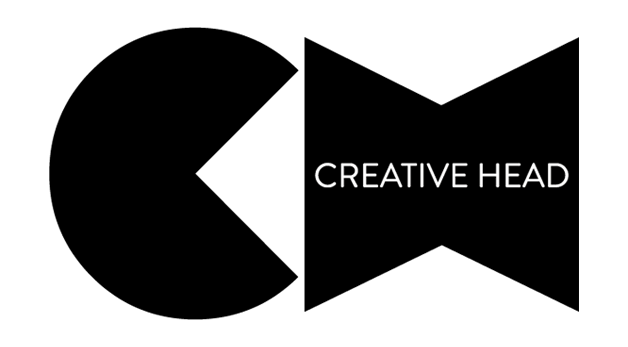FIVE GREAT MOVES IF YOU’RE A HAIR BUSINESS OWNER
These were the big ‘must-dos’ that emerged from Salon Smart 2024.
The hairdressing landscape is complex and challenging, so it’s more important than ever for business owners to be pro-active and strategic. Here are the best ideas for thoughtful decision-making to come out of Creative HEAD’s networking event for salon and barbershop owners, Salon Smart 2024.

Massarella & Jones
Business collaborations can bring lots of benefits: they help build relationships, generate ideas and create new opportunities. When Jordan Massarella and Ben Jones opened their new Massarella & Jones premises in Leamington Spa, they made it a priority to develop relationships with local businesses that operate exclusively online. A collaboration with a local florist not only ensures the reception area always has stunning flower arrangements, the blooms are also available for clients to purchase; a collection of books on the coffee table includes works by local authors, giving clients the chance to discover new literary talent. Says Ben: “Our salon operates as a shopfront for these businesses, giving them useful exposure, and we gain brand awareness through their social media followings that target a similar local demographic to our own, which in turn brings new clients through the door.”

Chris Foster
Yes, we know, AI feels very Brave New World, but it is revolutionising the way businesses interact with their customers, and salons should grab a slice of that action, argues professional profile-builder (and men’s hair specialist) Chris Foster. AI-powered chatbots can be programmed to do anything from handle queries to offer personalised advice, using natural language processing and machine learning to communicate with customers in real time. “What if you had a retail bot in your business, just retailing? While you’re talking to your client about Love Island, she can interact with the bar code by her chair, which is recommending her products, showing her how they’re to be used, she puts them in the basket and picks them up at your till. A well-trained bot is an asset to any business,” he said.

Sam Cusick
As a business owner you’re probably attempting to do the work of five full-time jobs. Keep hold of the parts where you know you bring value but ensure people with different strengths take care of the rest. As serial entrepreneur Samantha Cusick stated: “In order to grow, you need to take steps to work on your business, not in it. That includes delegating tasks, so that you can create the time you need to work on your plans.”
And after years of being told not to put the salon assistant in charge of Twitter, Instagram et al (something about compromising the ‘authentic tone of voice,’ we seem to recall) it turns out even social media is fair game for delegation. Says Ben Lifton, social media expert of Content Kweens: “I thought my socials had to be all about me, but I learned the hard way that’s not the case. I hired someone to help me with content creation and they shone a light on so many holes in my existing business and so many new avenues I could explore. Delegation is important!”

Mark Ronayne
Are you familiar with the Employment (Allocation of Tips) Act 2023? (Err, hello, what?). It’s a piece of legislation – expected to be introduced on July 1 this year – that creates a legal obligation on employers across all sectors (including hairdressing) to allocate all tips, gratuities and service charges which they are paid or which they exercise control or significant influence over to workers, without any deductions. It also requires employers to ensure that the distribution of qualifying tips between workers is fair.
The legislation and draft code concern what is called ‘Employer-received tips’, which involve tips paid by a consumer and subsequently allocated and distributed to workers by the employer. For example, a client pays a tip via card payment made into the employer’s bank account before being distributed to the workers.
This is different to ‘Employee-received tips’, whereby the employer has no control over how the tips are distributed. For example, if a client pays one of your team members a cash tip that the team member is entitled to keep for themselves. Employee-received tips are not covered by the legislation.
With the aim of promoting fairness, the new legislation places great weight on an employer’s duty to be transparent when it comes to tips and how they are allocated and distributed. To ensure transparency, employers will be required to:
• Have a written policy in place for how tips are dealt with at their place of work: This policy must be made available to all employees and agency workers.
• Consult with workers to seek a broad agreement that the allocation of tips is fair, reasonable and clear. As above, factors determining the allocation of tips must be included in the written policy.
• Keep a record of tips received and distributed to each employee for three years from the date of the tip: All records need to be kept for three years from the date that the tip or service charge is made by a consumer.
• A worker has the right to make a written request (limited to one request per worker in one three-month period) to view the tipping record for a period dating back three years. If a request is made, the employer must provide:
The individual’s tipping record; the total amount of qualifying tips received by the employer (i.e. Employer-received tips); and the amount of tips paid to that specific individual (tipping records of other individuals must not be disclosed as part of this process).
(Luckily for customers of salon software Phorest, as Salon Smart presenter Mark Ronayne confirmed, there’s a free update that ensures your customers can still tip, and you will stay compliant. For more info visit phorest.com)

Maddi Cook
It’s common knowledge that the hairdressing industry can be guilty of discounting (let’s face it, discounts are easy to give away). And yes, they can be a great way to promote your business, bring new customers and turn existing ones into loyal clients but discounts can play havoc with your profit. So is there another way?
“Please put your prices up, guys,” says Boss Your Salon boss Maddi Cook, who once surveyed 20,000 hair pros on how they set their current prices to discover that 80% either copied their competitors or guessed. “The prices you charge need to be tailored to you and your business. You will have your own household income, number of kids, amount of debt and mortgage interest – and that’s what make your goals so specific to you. There are so many moving parts. So your pricing has to be really personalised to you and based on your goals. And actually, when you learn to articulate the value of what you do – the incredible hair you create, the services you offer – pricing becomes less and less relevant. And that is one of the easiest ways to soften the blow for any price increase is to lean into that and learn how to articulate what you do.”
Meanwhile, Danny Coles of colour management system Vish says salon owners need to start looking at the cost of product, in order to price services more accurately and profitably. Other industries charge for every bit of product, he argued, whether that’s ordering an extra ‘side’ in a restaurant or a refill in a wine bar – while salons often lose out by not understanding the numbers (a Vish survey of 2,400 salons showed that one in five colour services are non-profitable). “Learn from your local garage,” said Danny. “They break down their invoice into parts and labour, and you need to start thinking that way too. Break down your services into time and product cost, price accordingly, and the profits will come.”
Related
Want To Learn The Moodie Method?
Neil Moodie unveils new masterclass for aspiring session stylists
Revlon Professional Visionaries: Re:Mastered Is Back!
Annual mentoring programme open for entries
Revealed! Pantone Color Of The Year 2026
It’ll be all white on the night for this year’s trending shade…










